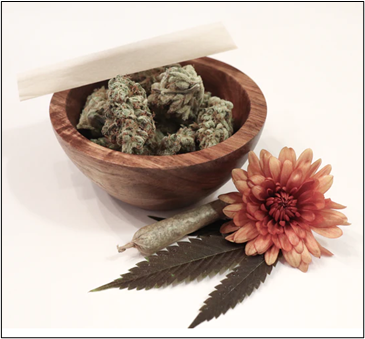
Cannabis tinctures are discreet, powerful and convenient to use. The following recipes make it easy to make tinctures even if you want to avoid alcohol.
When making tinctures, alcohol is the standard solvent used. Why is this so? Because alcohol is very efficient at extracting cannabinoids, which makes for a very potent tincture. In addition, ethanol promotes speed of absorption, which means that the effects can be felt almost instantly. However, as well as being very expensive in its pure form, not everyone wants to consume alcohol. If you are sensitive, even a few drops of high alcohol content can have a noticeable effect. This is where the alternatives to alcohol come in, and fortunately they exist. The most commonly used non-alcoholic solvent is glycerine, a common food ingredient that is safe to consume.
Glycerin is of animal or vegetable origin, the latter being the preferred choice. It is widely available in pharmacies and sold as a pure sweetener. The sweetness is an advantage, as it makes the tinctures very palatable and pleasant to consume. However, glycerine tinctures have a limitation, namely their potency. It has been found that glycerine only contains about 1/3 of the cannabinoids that alcohol can, so you have to consume a little more to get the same effect. The boiling point of glycerine is 290°C, so it is impossible to reduce the liquid as you could with alcohol, which would increase the concentration. The only way to make glycerine tinctures stronger is to re-impregnate the infused liquid with fresh material, but this has its limitations. Although they are never as strong as alcohol-based tinctures, their strength is generally not a problem when a little more is consumed.
HOT EXTRACTION VS. COLD EXTRACTION
Because of their sweet taste, glycerine tinctures are ideal for use in dishes, as well as for consumption on their own, by the drop. There are basically two methods of preparing glycerine tinctures: with or without heat. Heating has the advantage of speeding up the process considerably, but has the disadvantage of boiling some terpenes and losing some flavour. If you are looking for the healthiest product, cold maceration is the best option. If you need your tincture real quick, it will be with heat.
MAKING THE tintures
Since tinctures are mainly used orally, the cannabinoids must be decarboxylated to become orally active. Even using the heat of a slow cooker, this may not be enough to completely decarboxylate the herb, so it is a good idea to bake the herb at 120°C for 30 minutes before starting the extraction. This will destroy some of the terpenes and give it a slightly cooked taste, but it will make the cannabinoids almost completely orally active. As an alternative, you can decarboxylate the cannabinoids once they have been infused in glycerine, this way there is no roasted taste.
Here is what you will need:
- Food grade glycerin
- A dry bud(the better the material, the better the tinture).
- A coffee grinder
- Glass jars
- A fine mesh strainer or cheesecloth.
THE CROCK POT METHOD – WITH HEAT
- Set the slow cooker to a low temperature. The ideal temperature is 80°C. If possible, keep the slow cooker on the “Keep Warm” setting; some slow cookers burn the tinture even at low temperatures, so be careful! If you are concerned or if this is indeed the case, try the clear pot method.
- Grind your cannabis as finely as possible with the coffee grinder or blender.
- Place the weed in the jar and fill it with glycerine until all the herb is covered. Place the jar in the slow cooker. Let it sit for 6 to 24 hours.
- Remove from heat and let cool for a few hours or overnight.
- Strain through cheesecloth (a paper coffee filter will clog). This will be a long process as glycerine is very slow and sticky. A good time to practice patience.
- Fill a dropper bottle and enjoy!
THE COLD MACERATION METHOD
- Grind your cannabis as finely as possible with a coffee grinder or blender.
- Place the glycerine and cannabis in a clear glass jar. A tight-fitting cap is essential.
- Place the jar preferably in a cool, dark place and let it sit for at least 3 to 5 weeks. You can also store the glycerine-cannabis mixture at room temperature and protect it from (day) light. There is no time limit. If you have time, leave it to soak for half a year. Shake it daily to promote the release of the desired cannabinoids.
- Filter through a cheesecloth or fine mesh strainer (again, a paper coffee filter will not work).
Although the clear jar method takes much longer, it preserves the terpenes more effectively. As for storing your cannabis tincture, it is recommended that you put it in the fridge, which will extend the shelf life. If you use this method and no heat is applied, the tincture will not be orally active. To make it active, decarboxylate the material either before soaking or by placing the final liquid in a hot oil bath for half an hour.
DOSAGE
Depending on the amount of herb and glycerine used, the tincture can be more or less potent. Experiment with the dosage until you find the right amount, but generally start at the bottom. If one drop doesn’t do the trick, try two, then three, etc. The tincture is ideal for infusing food – just add the desired amount to the dish of your choice. It is also possible to use the glycerine tincture in an electronic cigarette, but the effects will not be very strong.



Leave a Reply